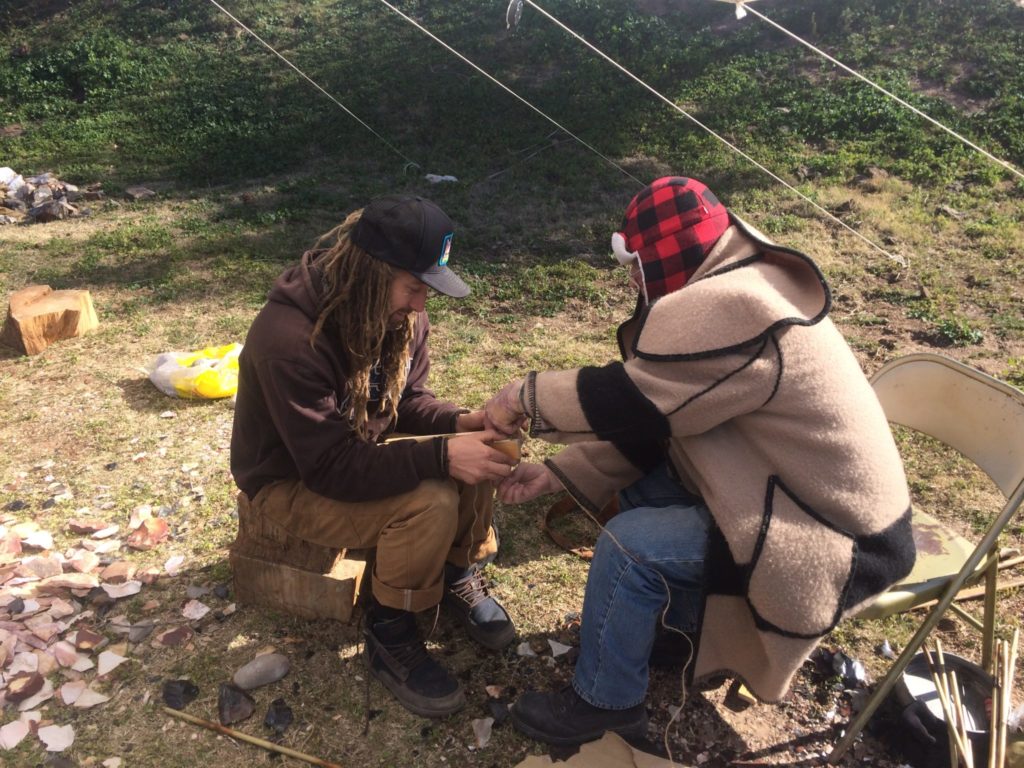- Home
- >
- Preservation Archaeology Blog
- >
- Hands-On Archaeology: Winter Count 2019
(April 28, 2019)—From February 10–16, I attended Winter Count, a traditional skills gathering. This year was the 25th time it was held in southern Arizona and the second time it was held at that location, about 30 minutes east of Florence. It was my third time attending. The first few days were very cold and the last two were rainy, so we got a real experience. The event is held outdoors and participants camp out. A vast array of classes was offered, and my goal was to learn new skills.
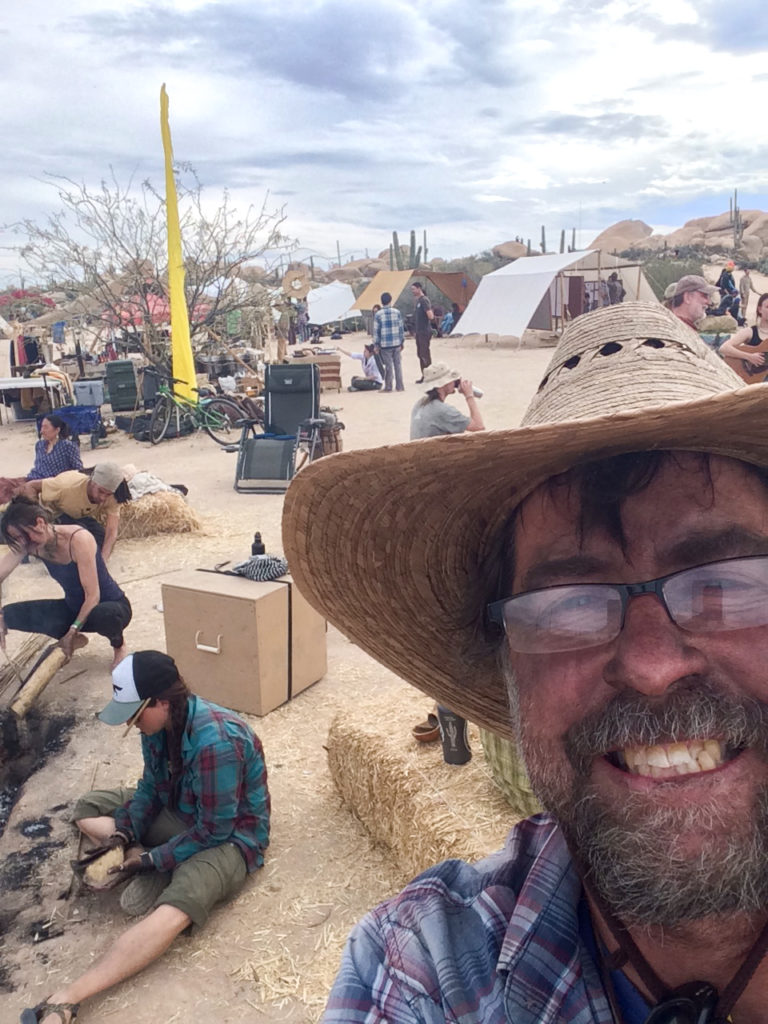
Micro-Animal Processing
In this class, we bark-tanned a mouse hide. At first you might think this odd, but consider that past residents of the Southwest, especially ancient farmers, got most of the meat they consumed from small mammals. Archaeologists have recovered many examples of rabbit-fur blankets and bags made of small, tanned pelts from sites in caves and rock shelters.
We were given mice that are sold frozen as food for pet snakes.
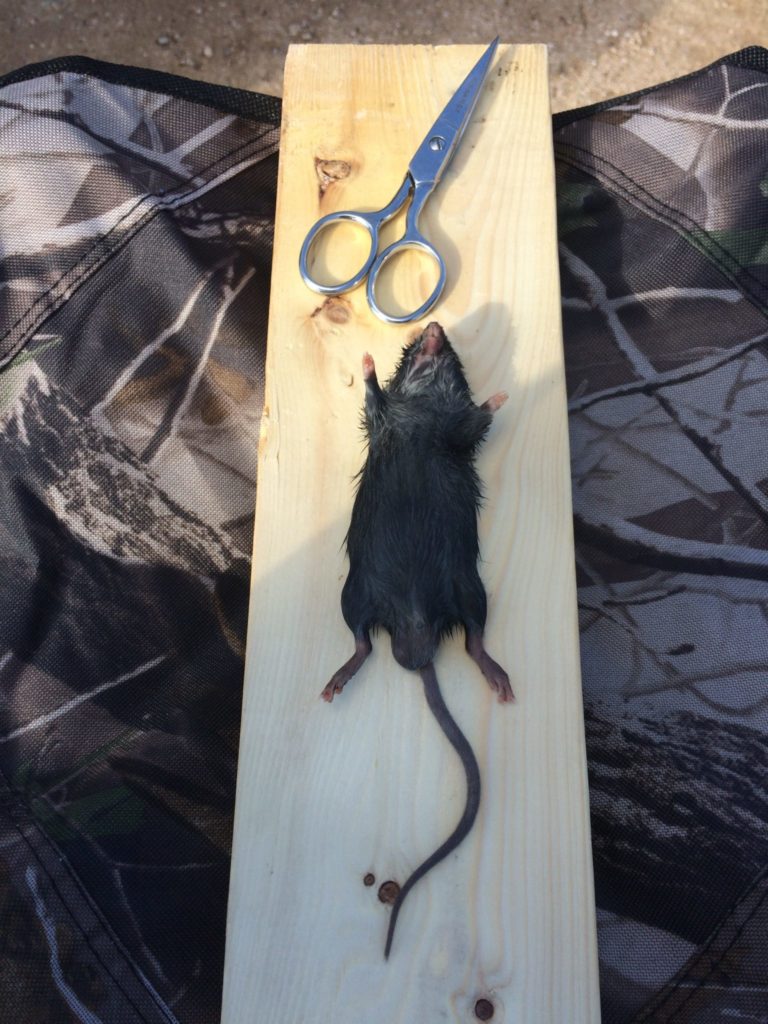
To see an image of the hide peeled back, click here.
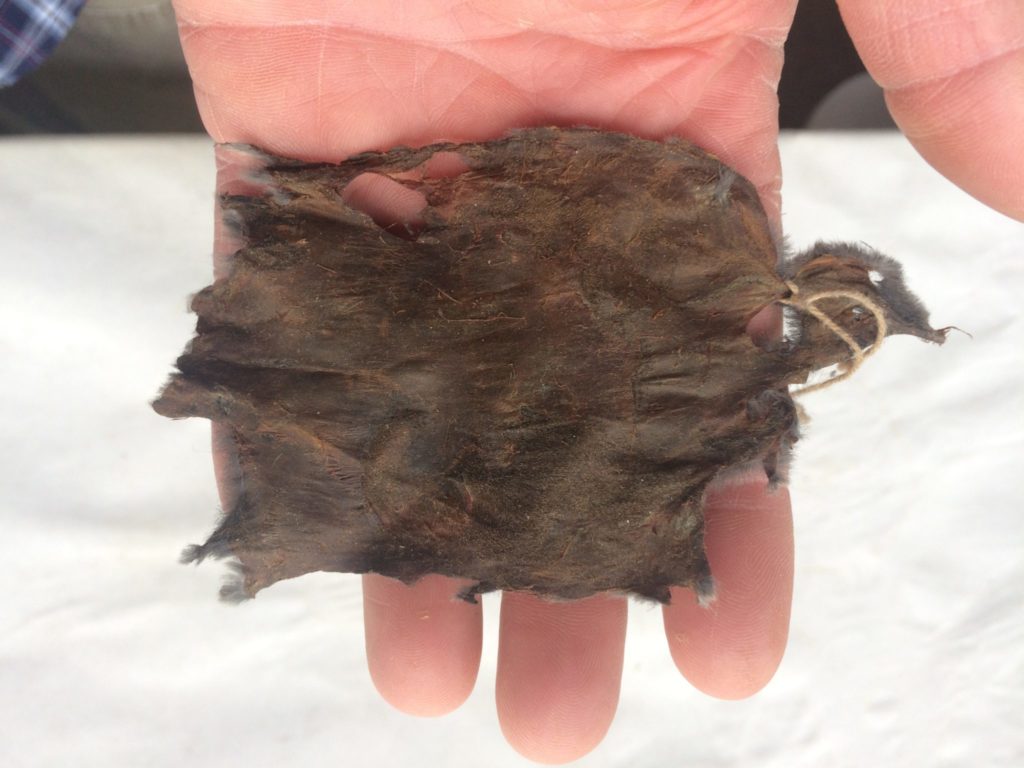
When we finished skinning the mice, we each soaked ours in a small pot of water with two black tea bags (two per mouse). The tannins from the tea turn the hide dark brown and coat the fibers in the skin, helping the hide stay soft and supple as it is carefully worked and stretched. The final step was rubbing vegetable oil into the hide. Bark-tanned hides are more water-resistant than brain-tanned hides, but not as soft or supple. The entire process took a day. Larger hides would require months of soaking in water with bark or other high-tannin plant material.
Drilling a Bannerstone
This class was taught by Larry Kinsella. Larry is a celebrated flintknapper who has won the Crabtree Award for his avocational work in flintknapping and experimental archaeology.

Bannerstones are weights incorporated into atlatls known from Eastern Woodlands regions. Atlatls known from the Southwest did not have bannerstones, though some did have weights.
Larry demonstrated that a hunter armed with an atlatl would want to be in a ready position, potentially for some minutes at a time. The advantage of a bannerstone would have been as a counterweight to balance the atlatl in a way that caused less muscle fatigue while waiting in the ready position.
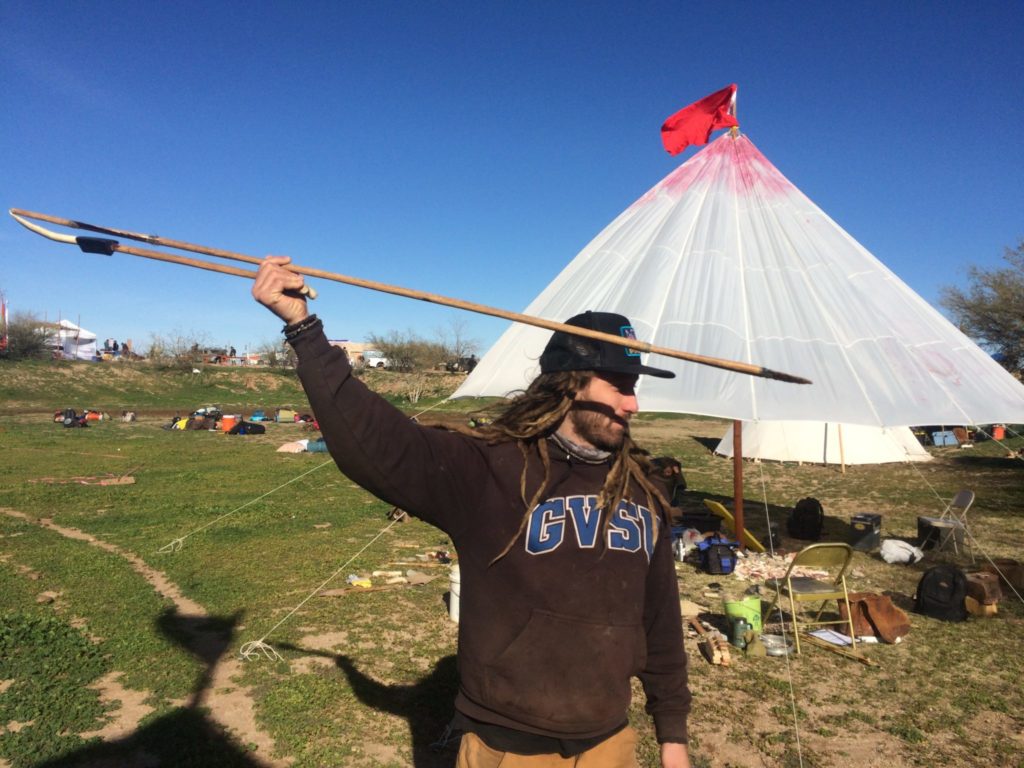
Many different kinds of bannerstones are known archaeologically, made of banded slate and other, harder stones. All were drilled to fit over the dowel-like part of the atlatl. Based on the shapes of the holes, we know they were not drilled with hafted stone drills. Larry’s method holds the bannerstone in a jig, making it possible to drill a straight hole with a piece of river cane and grit. For grit, he uses tiny flake debris winnowed from flintknapping waste. For the class, the debris was from Burlington chert, which Larry uses to make bifaces.
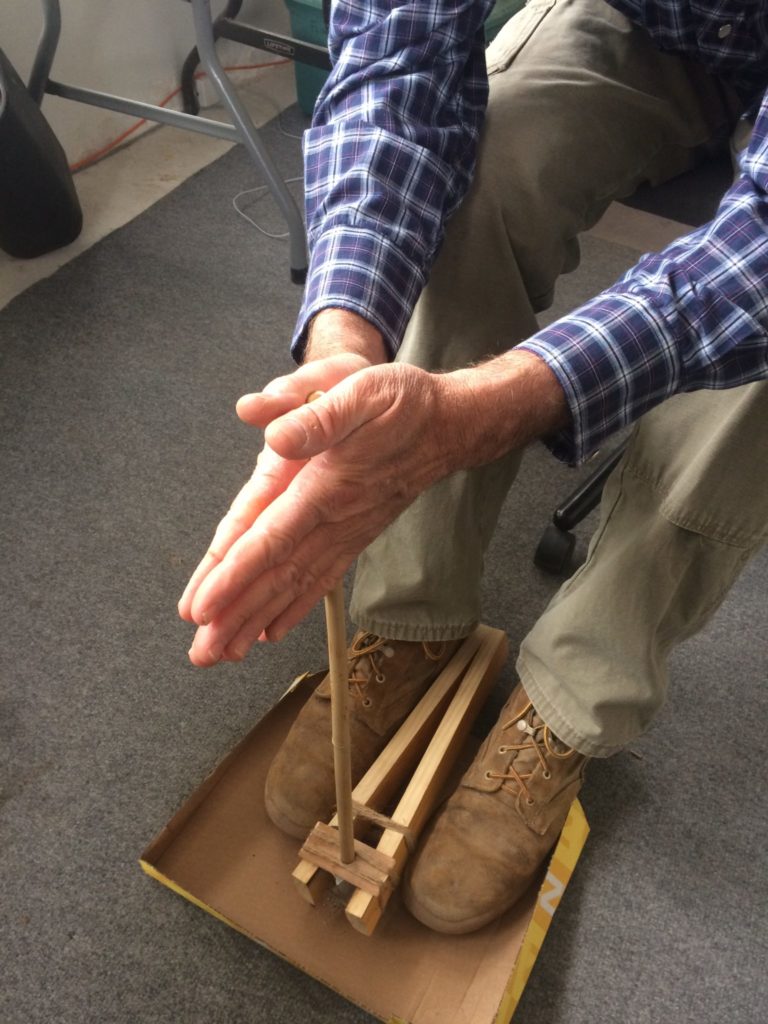
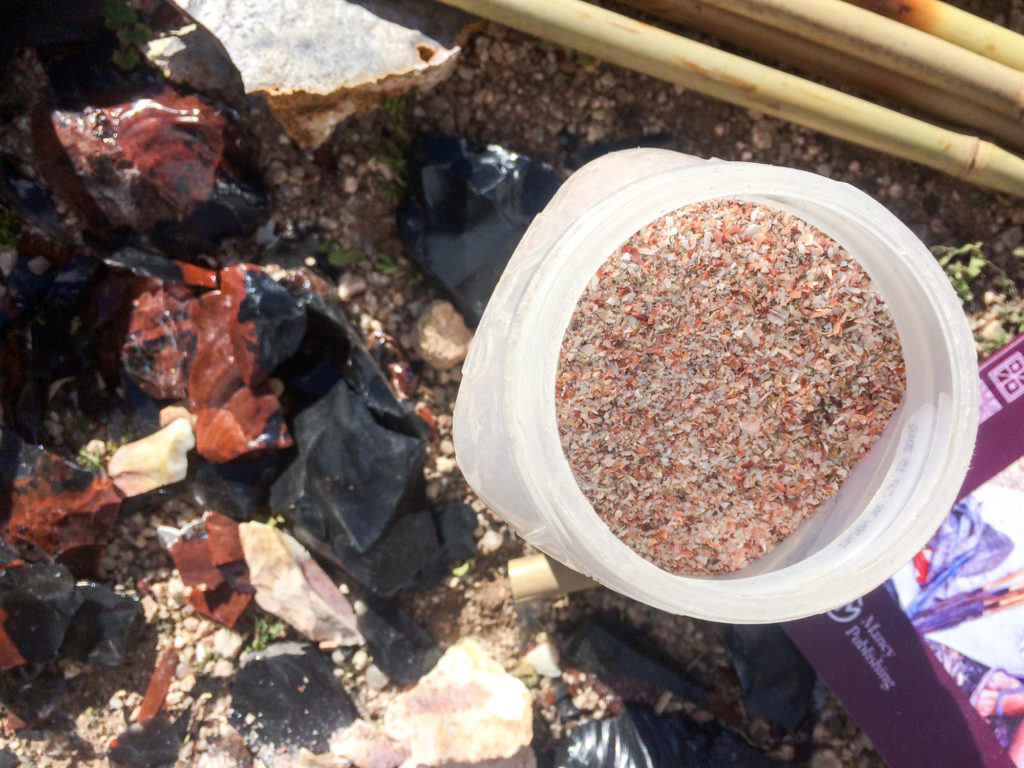
There is only one kind of artifact I am aware of in the Southwest that might have been drilled in a similar manner—“cloud blowers.” These long-stemmed pipes are known from Early Agricultural period sites in southern Arizona.
Larry supplied us each with a triangular, loaf-shaped bannerstone blank. He then showed us how to set the stone in a holding vice with a drill jog in order to start the hole straight. Using a pinch of grit and applying slow, gentle, downward pressure on the cane, we created a hole. Because the river cane is hollow, the process creates a cylindrical plug of stone. The plug, in turn, helps guide the drill down straight.
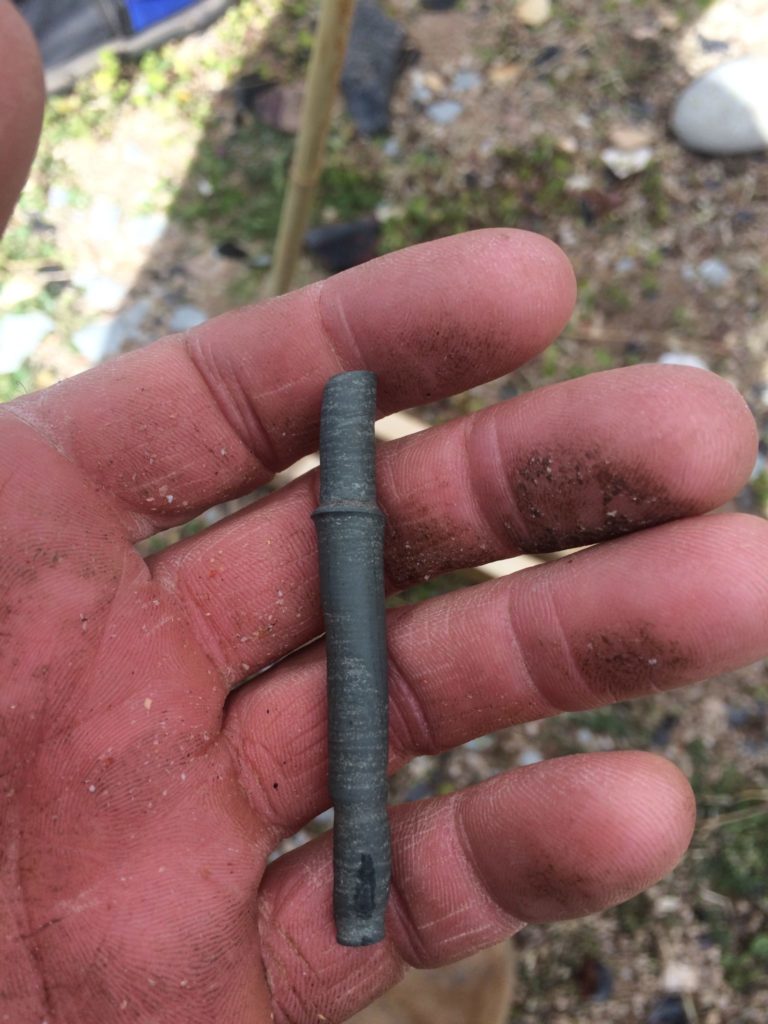
This image shows what the drilled-out core looks like. As Larry drilled the hole, the river cane cracked and started to expand. Larry then turned the piece around and drilled from the other direction, meeting up pretty nicely in the middle.Cores looking just like Larry’s are found in archaeological sites in the Eastern Woodlands.
By the time I left Winter Count, my bannerstone hole was only about 4 millimeters deep. I didn’t record how much time I’d spent on it. I can confirm that it takes a great deal of work—and patience! I’m experimenting with the technique for drilling holes in tiny beads.
Explore the News
Related to This
-
Post Hide and Squeak

